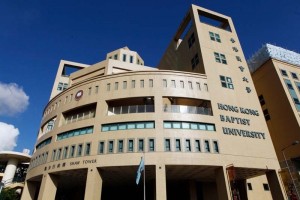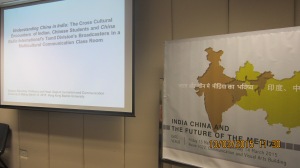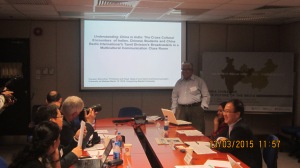Future of Media in India and China
Questions on future of media evoke a certain cause for concern in Western press/media markets because of the pinching implications on account of the popularity of internet media. We have had conferences on “Future of Media” and even “Death of Journalism”, in the past. But the conference “India, China and the Future of the Media” organised by the School of Communication, Hong Kong Baptist University, Hong Kong is of a different kind and belongs to an entirely different league, in terms of the diversities of approaches the Chinese and Indian Scholars have brought to the conference in exploratory and critical modes.
Surprisingly, more so because of the perceptions fed by Indian media and Western media, the critical inputs came more from the side of the Chinese scholars. In one interesting and provocative presentation, Dr Zhan Jiang of the Dept.of International Journalism and Communication, Beijing Foreign Studies University, China contributed to a better understanding of the ethical and moral decadence that has set in Chinese media. He said: “The Chinese media are the most corrupt in the world”. He presented a clear conceptualisation of the nature and characteristics of ethical and moral violations.
Given the antithetical nature of the political environments in China and India, engagements with the issues of the future of media in India and China, defies logic if we do not get out of the ephemeral positions. There is a vast potential for engagement with China and India through the prism of the vexatious question on the future of media in China and India. Given the falsity of the mandated co-presence of universals such as democracy and journalism, many have the notion that an equal plane of engagement may not be possible in this case. But the presenters from China proved otherwise. There are perceptible yearnings to look at the media practices in China with a critical perspective even as they acknowledged that the absence of democratic institutions, as in India, need not be highlighted as a great impediment.
Prof.Shi Anbin from the School of Journalism and Communicaiton, Tsinghua University, China, engaged with that position in the first presentation of the colloquium. He traced the linkages between NWICO, WSIS and the former President of Xinhua news agency proposed as an alternative to the previous frameworks, in the form of UNM. Conceptually, the alternative in the form of UNM makes tremendous sense,but going by the imprints of the “gift culture”, that is peculiar to North Asian countries like Japan, China and SKorea in the UNM, the gifts in the form of awards, as the Chinese want to give to news organisations and journalists across the regions, evokes only imageries of a new fledgling benefactor, taking charge of the universe of international communication.
Looking at the cultural variables in the organisation of international academic conferences, the not so formal and yet perfectly coordinated academic sessions and the sustenance sessions (refreshments and lunch) prove a point for Indians and colleagues from Western countries organising international conferences. There were no chairpersons to ring a bell to curtail the long time taken by the presenters. The host, Prof.Colin Sparks was not tense, even for a moment. Instead of throwing sparks, he was enjoying the moments clicking away them with his bulky camera. No student volunteers to oversee the hall arrangements, except two PhD scholars. The office staff took charge of the arrangements in a discreet way.
The Honk Kong Baptist University, was established by American Baptists, but later transformed in to a state university. It has a sprawling campus, in a land starved Hong Kong, mostly dotted with high rise structures. The student hostels are in multi storey buildings. The foreign student hostel is housed in the NTT international guest house, where the conference participants stayed. I could not find some of the buildings I saw in 2003 during another HKBU hosted conference. In particular, I was pleasantly surprised to find the School of Communication in a 10 storey building, which also houses the public art gallery in the first levels.
While everyone was talking about the media driven approach, I was talking about a cultural and historical approach through the prism of critical communication pedagogies. Many found the historical reflections on the linkages between China and Tamil Nadu/India interesting. Here is the title of my presentation: Understanding China in India: The Cross Cultural Encounters of Chinese Students and China International Radio’s Tamil Division’s Broadcasters in a Multicultural Communication Class Room.



